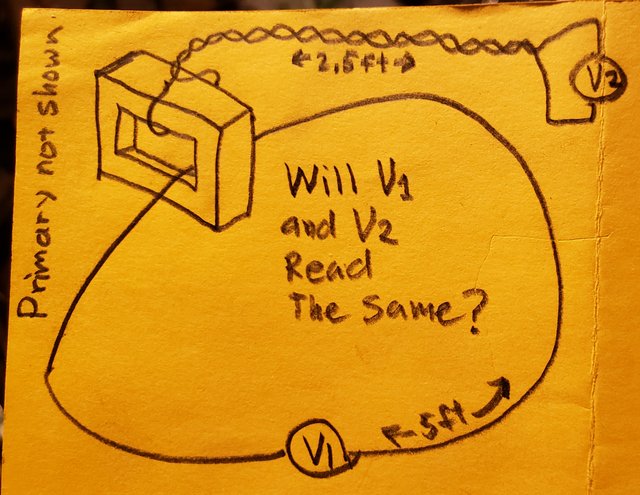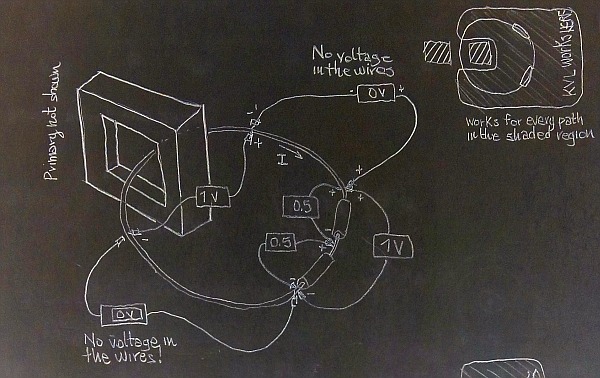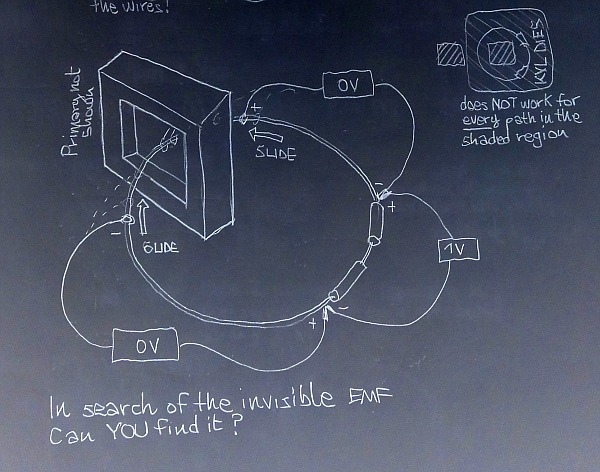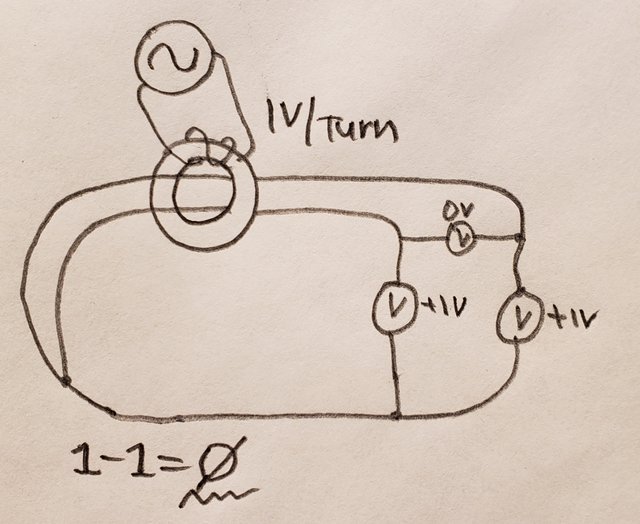Goodness you dodge and weave when asked questions.
But look at the diagram you provided. From that any reasonable person would conclude that the paths which do not collide with the core material, (i.e. either completely inside or completely outside) are lumped.
You know, I don't think you know the meaning of lumped. You try to apply it to paths? What is a lumpable path? I apply it to circuits (you need to lump them, squeeze them to make them as small as a point, dimensionless) or components (same). And why can't you lump a circuit or a component that has a magnetic flux region inside? Because flux needs an area to have a meaning. You can't squeeze it into a point without losing meaning. That's the point (pun intended). But if the component has terminals close together...
But what is a 'lumped path'? Where did you heard of this?
Again, you're quoting me out of context. My comment was in reply to your diagram where you showed different hypothetical paths within an element:
 https://i.postimg.cc/VvFWycbH/Voltage-can-be-path-dependent.jpg
https://i.postimg.cc/VvFWycbH/Voltage-can-be-path-dependent.jpgYou clearly show different possible paths within the element, the 5v and 0v paths inside that element are unambiguous, unvarying, and if that is the path in that element, then it can be considered a lumped element in a KVL loop and KVL will hold.
You already admitted that there is no practical difference between V1 and V2 configurations in this diagram:
 https://i.postimg.cc/fTgyDNp0/20211119-030105.jpg
https://i.postimg.cc/fTgyDNp0/20211119-030105.jpgYou also admitted that V2 in the above diagram would work as a lumped element in a KVL loop.
So if V1 and V2 are functionally identical, and V2 holds in a KVL loop, then why not V1? They have the same voltage. They are functionally identical. What's the difference?
A lumpABLE system can be considered lumpED or UNlumped depending on what you consider its circuit path. If the circuit path contains the magnetic flux region, you cannot squeeze it beyond the perimeter of that region. If the component contain the flux region, you take the terminals out, put them very close together so that they can occupy (so to speak) the space of a point on your circuit and attach them to a gap as wide as a point (so to speak) on your circuit path. Your circuit path, including the connection to the component, is now shrinkable to a point.
If configuration V2 and configuration V1 in my above yellow diagram are functionally identical, then why does it matter?
ARE YOU SAYING THAT THE TERMINALS MUST COME VERY CLOSE TOGETHER OR MY VOLT READINGS WILL BE DIFFERENT?
You already admitted that the V1 and V2 readings in my above yellow diagram would be identical, so why does it matter if the wires coming out of the transformer have to come near eachother? Does that change the voltage? Does it change whether my volt meter readings will all add up to zero around the loop of which that transformer secondary is an element?
What the heck is a 'lumpable path'?
As stated above. You quoted me out of the context of the diagram I was replying to.
Here is the answer to your previous quiz
You talk about measuring reality, so this is my prediction for your circuit. If you don't like the polarities flip the signs.

https://i.postimg.cc/R04QGyHs/KVL-works-if-I-leave-out-the-magnetic-region.jpg
I see you noticed that you made the same mistake Lewin did and you got one of the volt meters backwards, but at least you caught it in time to put a text note that says I can flip the volt sign.
So yes, I'd like to flip the sign on the left-hand meter which reads 1V. You have to keep the meters all pointing clockwise or counter clockwise -- but all the same way for a given test -- around the loop. That's just the way KVL is. If you mix up your volt meter signs even with pure batteries and resistors, KVL will appear to fail then too.
With all the volt meters pointing plus-clockwise, then you can see that the voltage sums to zero, just like KVL says.
So do we agree that KVL at least APPEARS to hold on your above diagram, since taken in a positive clockwise series of element voltage difference readings, all the voltage differences sum up to zero?
Note that you won't be able to measure any voltage in the perfectly conducting wire of the ring, in accordance with Ohm's law. So, are you a lumper, or today you decide that there is voltage in the wires and in the probes? I have to ask.
I don't understand the question. I think you're making a dichotomy between a lumper and there being voltage IN the wires.. but I'm not sure what you're trying to ask. If a wire has induced voltage, I'd rather say that it has induced voltage across it.
I don't know what you mean by "lumper" - I say I'm just an observer of reality. I did not decide anything today.
Try your question again more clearly please.
But maybe this answers you. Like I said a hundred times already, my argument is that in your diagram above (and the others functionally the same), the wire passing through the transformer core MODELS AND MEASURES
as if the voltage is induced at the point the wire passes through the inner most area INSIDE the core, and the wires outside the core MODEL AND MEASURE
as if they there is no voltage induced across them.
Once you realize these self evidence facts, then I'd love to go on to talk about what you think is really going on.
But getting you to admit to the obvious and undeniable reality of how things model and measure has been like pulling teeth from a whale.
So do we agree then that in a setup as you show in your diagram above, the transformer secondary winding MODELS AND MEASURES
as if the entire induced voltage is where the wire passes through the core, and that the wires outside the core MODEL AND MEASURE
as if there is no voltage induced in them?
Now, it's my turn.
Same circuit (you can even use a single resistor if you want. My prediction is that you will observe zero volts in the wires even when the sliders (you sliding the probe tips along the ring) get in contact inside the core.
So how does KVL "appear" to hold?

https://i.postimg.cc/cH5RxJ52/KVL-dies-if-the-magnetic-region-is-inside-my-circuit-path.jpg
Now, if today you are still a lumper, please tell me where is the EMF on the ring.
KVL continues to hold once you MODEL REALITY.
The REALITY is that by sliding your volt meter probe through the core, you now have ANOTHER SECONDARY WINDING, AND ANOTHER LOOP!
Like this:
 https://i.postimg.cc/LX6wZVFJ/20211121-235058.jpg
https://i.postimg.cc/LX6wZVFJ/20211121-235058.jpgSee? You have TWO secondary windings, with the SAME number of turns, and the SAME direction, and they are both having induced across them the SAME VOLTAGE and in the SAME POLARITY at the SAME TIME.
Of course the difference between them will be zero, because 1-1=0. Go figure.
And you don't just have one loop anymore, you have TWO loops. Or three, depending on how you want to model and measure.
If you MODEL REALITY, like I've been saying the whole time, KVL will hold with elements composed of the secondary windings on closed-magnetic-circuit-core transformers.
If you DON"T model reality, then all of physics will fail you, not just KVL with transformers, but KVL without transformers, MaxEQ, Ohms law, EVERYTHING.
I don't know what you mean by "lumper" but the EMF MODELS AND MEASURES as being across the transformer secondary at the very point it crosses through the core on a closed-magnetic-circuit-core transformer.
By the way, if you put two AA batteries minus to minus and measure the voltage difference between the positive terminals, the difference will also be zero. You could use this same "trick" and add in an undocumented battery into your loop and make KVL fail with just batteries and resistors too, as I'm sure you saw hahahaha
 https://youtu.be/V_Gs8tSqBRY
https://youtu.be/V_Gs8tSqBRY 
The point is that by adding in additional voltage sources/drops and creating nested loops but pretending there is only one loop will get you in the same trouble with pure batteries and resistors as with a transformer.
So do we agree that if we run two identical parallel windings on a transformer that the voltage difference between them is zero?